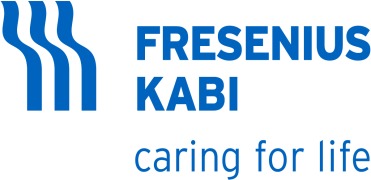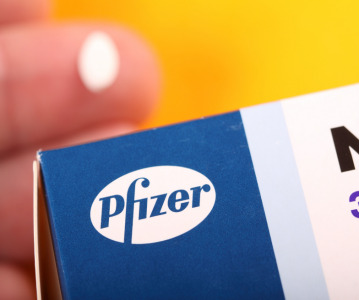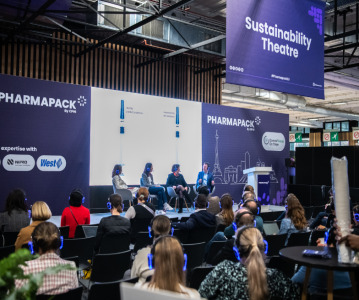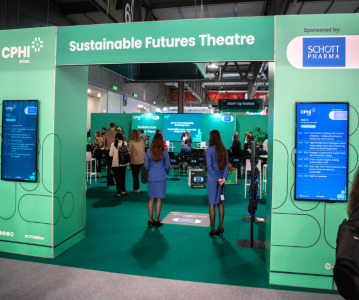MDR – How to collect post-market clinical follow-up data (PMCF): Connect to Frankfurt on-demand
.png)
In this Connect to Frankfurt session, Philipp Annecke, Junior Key Account Manager and Heinrich Martens, VP Regulatory Affairs of Fresenius Kabi (Bad Homburg, Germany) present guidances from the Medical Devices Regulation on clinical data evaluation for medical devices, and how manufacturers can select the right method and strategy for collecting post-market clinical follow-up data (PMCF)
As part of our conference track on Packaging, Drug Delivery & Patient Centricity, this session explores strategies for the collection of post-market clinical follow-up data, and the importance of a robust post-market surveillance and follow-up strategy (PMS).
PMS according to the Medical Devices Regulation
The Medical Devices Regulation (MDR) is a regulation requiring rigorous and detailed evaluation of clinical data for medical devices. This poses a challenge for many in the medical devices industry looking to invest time and costs into development and innovation – what support exists for MDR-compliant technical files for medical devices? Medical devices manufacturers can often be left wondering how to implement a successful MDR project to collect PMCF data.
With an introduction the scope of the session from Annecke, Martens goes on to detail important considerations that must be given to PMS and PMCF data collection.
What is PMS and PMCF?
Martens describes PMS as a proactive and systematic process for deriving necessary corrective and preventive action from information about medical devices already existing on the market. It will become quite clear throughout the session that the operative action is ‘proactive’ - actively collecting data (both proactive and reactive) to remain vigilant in a company’s risk management process.
While a medical device will no doubt be tested throughout the development and manufacturing process to ensure patient safety before it is placed on the market, Martens emphasizes that risks do not end once the item is available for use - certain risks may not reveal themselves until it has been used regularly over time. Martens lists various aims of PMS, including systematically identifying risks in practical use of a product, checking the ‘field’ performance of a product, continuously updating benefit – risk assessments and initiating necessary measures rapidly, and drawing necessary conclusions to determine, implement, and monitor either preventive and/or corrective actions. It is only through a continuous, systematic, and active monitoring of a medical device after it has been placed on market can manufacturers say for certain whether a product offers its promised benefits without uncontrolled risks.
Several device classes/categories exist, and differing frequencies for updates are recommended for each. Though some medical devices may need an annual update, some may be fine with one every 4 years. Either way, Martens emphasizes that PMS is not a one-time event – it must be an ongoing improvement process implemented into a company’s risk management and quality assurance system. PMS can interact with existing internal procedures, Martens reassures, fitting in with clinical evaluation and risk management, though he indicates that it will not be an overnight process. So then how can a PMS/PMCF data collection and management system be implemented?
PMS/PMCF process
Martens demonstrates how a PMS process can be implemented by utilising Fresenius Kabi’s own SOP as an example. Starting with the MDR Clinical Evaluation, consisting of a plan and report adhering to the regulatory body, the process then moves on to a PMS plan, a PMCF plan, and subsequent reports for the data collected from each, before looping back to the MDR Clinical Evaluation. By presenting the plan as a circle of steps and actions to take, Martens reiterates his point for an ongoing process of planning, data collection, evaluation, and analysis, and reporting when it comes to PMS/PMCF data.
As an additional highlight, Martens presents technical documentation on PMS giving guidance on planning and reporting, of which there exist several different documents. With so many different documentations, Martens underscores the importance of having trained individuals familiar with all guidance documents to streamline the planning and reporting process for a company.
Martens also invests a bit of time describing the difference between PMS and PMCF. The clinical aspects are fully emphasized in PMCF data, defining the proactive clinical need for a medical device. Patient need and use are proved in such follow-up studies with statistical rationales. PMS plans offer a broader overview of the market the medical device is on, observing similar devices on the market and gathering market feedback and complaints. A PMS plan may include a PMCF data as part of its process to remain vigilant in its conclusion of the benefit–risk determination.
PMCF according to the MDR
The MDR asserts that the legal manufacturer is responsible for the collection of product data in a proactive manner. Martens reiterates the importance of a proactive approach to clinical data collection. Such measures do not wait for complaints or risks to reveal themselves, but instead systematically collect and review experience gained from devices placed on the market.
So what makes a good, proactive PMCF data collection process?
Martens offers a case study on the collection of PMCF information with a PMCF survey for health care professionals. He runs through the important basic requirements for a survey, including the design of the survey aimed at health care professionals, the determination of appropriate sample sizes, and any data collection and statistical analysis tools that will make PMCF data collection easier and more reliable.
Summary
PMS and PMCF data, as emphasized by Martens, must remain a proactive and ongoing step in a manufacturers process of releasing a medical product to market. While different companies and tools might exist to streamline the data collection, evaluation, and reporting process, it is ultimately up to manufacturers of medical devices to ensure that patient safety continues beyond the clinic and into the market.
Discover more Connect to Frankfurt 2022 on-demand sessions here.

Related News
-
News Pfizer may shift production back to US under Trump pharma tariffs
At the 45th TD Cowen annual healthcare conference in Boston, USA, Pfizer CEO Albert Bourla outlined the potential for Pfizer to shift its overseas drug manufacturing back to the US as pharmaceutical industry players weigh their options against Presiden... -
News Women in Pharma: Connecting accessible pharma packaging to patients – a Pharmapack Special
Throughout our Women in Pharma series, we aim to highlight how CPHI events encourage discussions around diversity, equity, and inclusion initiatives in the pharmaceutical industry. -
News CPHI Podcast Series: Packaging expert perspectives at Pharmapack 2025
This month's podcast episode sounds a little different, covering the latest event in Paris – Pharmapack 2025. Digital Editor Lucy Chard speaks to several experts direct from the floor of the show, bringing you right in on the action.&nbs... -
News Closing 2024 with Editors' picks of top articles from the past year
Coming to the end of 2024 and it’s certainly been a busy year, for CPHI and for the rest of the pharmaceutical and healthcare industry. Topics of conversation throughout the last 12 months have been varied, touching on the technical, to the polit... -
News SCHOTT Pharma’s sustainable journey with CPHI
Sustainability is of paramount importance in the pharmaceutical industry. See how a recent partnership between CPHI and SCHOTT Pharma has helped to highlight and accelerate their sustainability journey to reach global goals. -
News CPHI Podcast Series: Investing in a vision for the future of life sciences
In this episode Lucy Chard is joined by Rajiv Khatau to discuss the importance of looking into new therapeutic areas and some of the more niche areas of pharmaceuticals, and investing in the future of the industry. -
News Lessons from CPHI Milan 2024: Sunny Intervals for Pharma Manufacturing?
As the 2024 CPHI conference wrapped up in Milan, we caught up with L.E.K. Consulting – a global strategy consulting firm with deep expertise in pharma manufacturing – to discuss evolving market perspectives and business outlook. -
News Women in Pharma: Reflections from Behind the Scenes
In this instalment of our monthly series, the team that brings you the Women in Pharma series each month sits down for a heart-to-heart on what the series means to them, and how they hope to continue their work in the future.
Position your company at the heart of the global Pharma industry with a CPHI Online membership
-
Your products and solutions visible to thousands of visitors within the largest Pharma marketplace
-
Generate high-quality, engaged leads for your business, all year round
-
Promote your business as the industry’s thought-leader by hosting your reports, brochures and videos within your profile
-
Your company’s profile boosted at all participating CPHI events
-
An easy-to-use platform with a detailed dashboard showing your leads and performance







